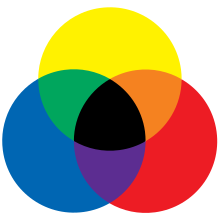It's usually the same crowd that comes to lab - so I'll just copy who was here last time. Let me know if your name is here, but you cannot make it! Or if your name is not on here and you can make it in!
As you can see, some classes have more volunteers than others, if you can come early and help out with another class, that would be a huge help to us!
Station #3 will be the messiest one this time around, so if there happens to be an extra person, send them to help make robots!
Also, if someone has to cancel at the last minute, get the teachers to help!
Meghan Goodman 8:00
Station 1. Jack _____
Station 2. Amanda______
Station 3. _Jamie _____
Kelly Johnson 8:00
Station 1. Pilar_______
Station 2._Jennifer__
Station 3._Vivian (Logan)____
Cheryl Kennedy 9:00
Station 1. Morton (Ross)______
Station 2. Jennifer________
Station 3. Emily& Melissa________
Emily Duerringer 9:00
Station 1. _Amanda ___
Station 2._Jack (Morgan)_______
Station 3._Teresa (Sophia)_____
Teresa Welch - 10:00-11:00
(this is the big class, so we'll need lots of volunteers!! Last time each station was split into two groups, that seemed to work well if there are enough volunteers to do that again!)
Station 1. _Kelly & Steve ______
Station 2._Jennifer (Chloe)______
Station 3._Emily (Audrey) & Anneliese___
Intro:
Keep this short ~ 5 min~ so they can spend lots of time at each station!
Good morning kid scientists! Are you ready for another science lab? Today we are going to learn about the physical properties of matter, or how we can describe different types of matter.
Hold up an random object (book, apple, pencil etc.), and ask the kids to describe it.
What color is it?
What is the size?
the shape?
texture?
color?
You just described the physical properties of a _________! There are many different types of matter, and everything has a unique set of physical properties that we can use to describe what it is.
For our stations today, we're going to explore physical properties like color, mass, shapes, sizes, and texture.
are you ready! Split into 3 groups.
Station #1: Color and mass.
Did you know that when you mix two different colors together, you can make a new color?

Mix paint on a plate -
Yellow + blue = Green
Red + white = pink
Red + blue = purple (use a little bit of white too)
Red + yellow = orange (just one little dot of red + lots of yellow for this one to work)
Everything together = brown / black
Lava Lamp!
Color and mass
Color: yellow oil + blue water = green bubbles.
Mass: Why does the oil float on the water?
Plop Plop Fizz Fizz!
the effervescence is produced by the baking soda (sodium bicarbonate) and citric acid reacting to form sodium citrate and carbon dioxide gas.
| C6H8O7(aq) | + | 3NaHCO3(aq) | → | 3H2O(l) | + | 3CO2(g) | + | Na3C6H5O7(aq) |
| citric acid | + | sodium bicarbonate | → | water | + | carbon dioxide | + | sodium citrate |
You are watching a chemical reaction! Sometimes when you mix two different materials together, they make a whole new material that has new physical properties! Like changing from a liquid to a gas, and gas is lighter than liquid, so it floats!
~~~~~~~~~~~~~~~~~~~~~~~~~~~~~~
Station #2 Texture
Some surfaces are smooth, and some are rough. In science, we determine how rough or smooth a surface is by measuring something called "friction".
Sometimes we want rough surfaces that will not slip - we don't want our shoes to slip on the ground, or our car tires to slip on the road!
Sometimes we want surfaces that are slippery though - like when we are cooking, we want our pancakes to slip right off of our pan, so we want a nice smooth surface for our pan.
We can measure how smooth or rough a surface is by looking at the angle it slips.
Test the friction of different surfaces -
Materials:
Carboard plank
Wooden blocks with different tire treads
Different shoes
Doormat, placemat, felt, bubblewrap
Procedure:
1.) Place a mat on the cardboard base (Doormat, placemat, felt, bubblewrap)
2.) Place a wood block with tire tread, or shoe on the mat.
3.) Pick up the plank until the object slips.
4.) Measure the angle that slip occurs with protractor & record angle for different materials on data sheet.
5.) Compare which material combinations and textures have higher friction
We have some lab supplies from LoneStar (make sure you get everything back to me!!!) including blocks with a bald tire, and a tire with tread on it, and some different bike tires. Talk about why tire traction is important!
.
Why friction and surface texture matters!
Station #3 Shape and Size
What shapes can they see in the classroom? (rectangle door, round light bulb, etc.)
Each group will have an assortment of shapes of different sizes and colors:
1. Sort the paper by shape (ie, make a pile of all the triangles, and a pile of all the squares, all the circles etc. etc.)
2. Sort the paper shapes by size (order them from largest to smallest etc.) talk about big, bigger, biggest etc.
3. Use the shapes to make a robot! For their glue, "one dot does a lot!" make sure they get their names on their paper.





